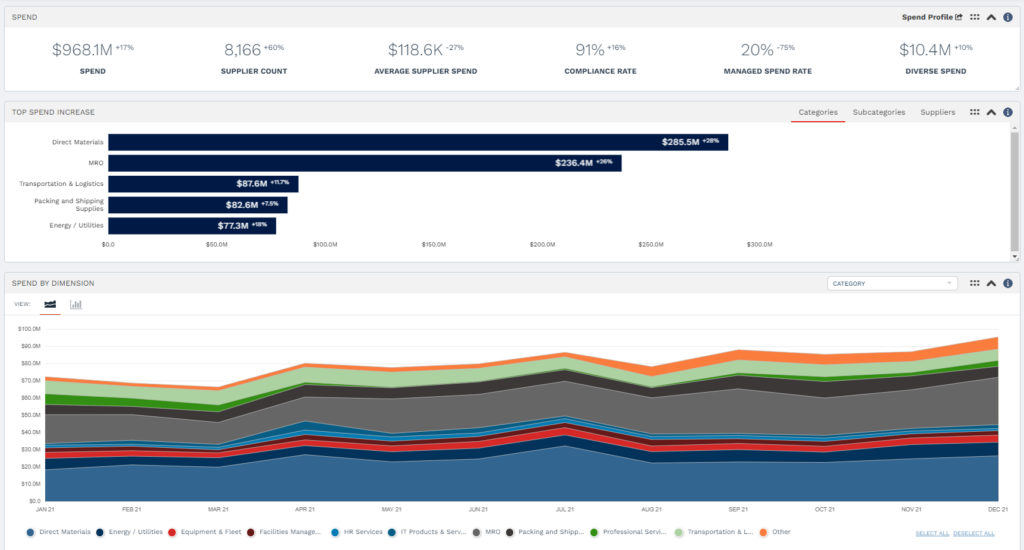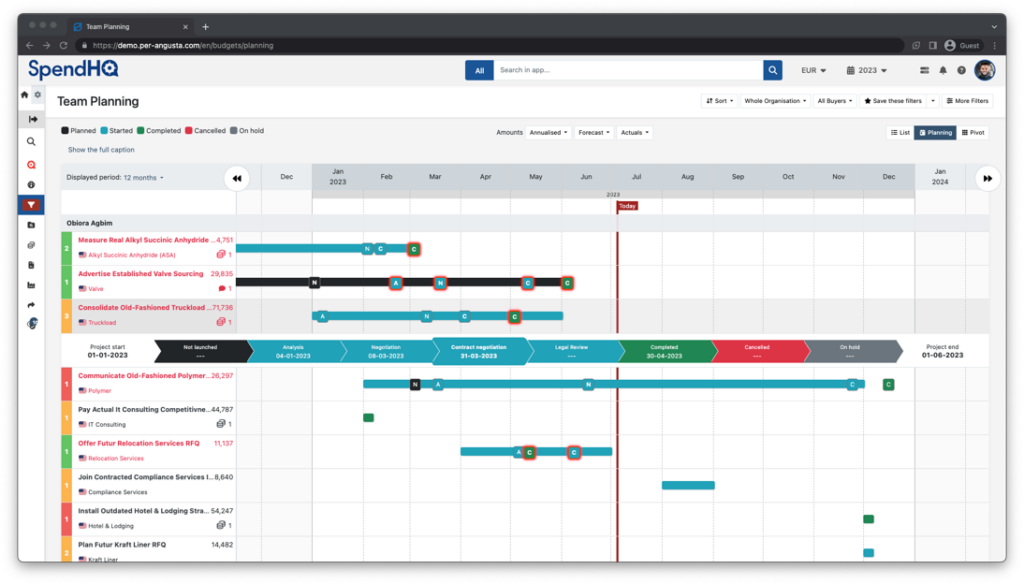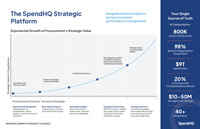How You Can Use a Tail Spend Analysis to Secure Quick Wins
In life, the biggest wins rarely come from attacking the biggest problems. Instead, they’re the sum of consistent, small successes that add up over time. Despite this fact, Procurement has a reputation for chasing the biggest projects to prove the function’s strategic relevance.
Cost-cutting initiatives are a notorious example. When procurement leaders focus their efforts on the largest expenses, they leave small purchases to add up and bloat the organization’s spend cube. As a result, the easiest strategic wins are left unclaimed.
Thankfully, that doesn’t have to be your story. With a tail spend analysis, you can act on these pockets of spend for easy, strategic wins. Before you know it, your work can add up to significant bottom-line contributions without requiring you to reorganize your entire supply chain.
Are you ready to capitalize on low-hanging fruit to maximize Procurement’s impact? Here are five steps you can follow right now.
What is tail spend?
Tail spend refers to the purchases that make up 20% of an organization’s spend but are spread out over 80% of its suppliers. In other words, tail spend is what happens when an organization buys a lot of little things from a lot of different vendors.
Think about packaging materials. If every business unit buys theirs from a different vendor, your supplier list will become expansive. While cardboard boxes are inexpensive, buying them from 100 different vendors introduces purchase price variance (PPV), which increases overall spend.
Now imagine all the other small purchases your organization makes every day. If there’s no control over the vendors they come from, you’ll have the following problems:
- Long supplier list
- High PPV
- Purchasing fluctuations
- Little to no risk planning
- No bulk vendor discounts
The results add up. By definition, tail spend at a $2 billion company accounts for $400 million in undermanaged spend. Procurement may not be able to eliminate all of it, but that’s a lot of opportunity for savings. Are you ready to capitalize on it? Here are the five steps you need to follow to conduct an effective tail spend analysis.
Step 1: Achieve spend visibility
There’s no way to address any of your spend, tail or not, without a way to see all of it. With only partial visibility, you can’t evaluate your categories and subcategories, count your vendors, or identify how much you’re spending with each one. Simply put, you can’t identify where the tail starts if you can’t see the whole animal.

Of course, the ability to do a tail spend analysis isn’t the only benefit of spend visibility. In fact, visibility is the gateway to procurement performance optimization. It facilitates spend intelligence, clear communication with stakeholders, and better project planning. So while it’s true that you need visibility to find tail spend, you really need visibility to do anything with your spend profile at all.
See how easy it is to achieve full spend visibility!
Step 2: Identify why spend is so spread out
Once you can see your tail spend, you’re ready to do something about it. But first, you should ask around to understand why certain subcategories have so many vendors. Usually, poor communication, outdated processes, and fragmented decisions are to blame. But sometimes, there are good reasons.
If you don’t check with stakeholders before cutting down on vendors, you’re going to struggle with buy-in. At best, you’ll create cross-departmental politics and opportunities for non-compliance. At worst, you may disrupt operations or even create supply chain risks. To avoid these issues, prioritize communicating with subcategory stakeholders. You’ll come out of these conversations with a clear perspective that you can use to put an effective plan in place.
Step 3: Draft a supplier consolidation plan
Once you have context around tail spend in a subcategory, you’re ready for tail spend management. The best way to do this is to answer the following questions:
- What are my quantifiable goals for this subcategory?
- What’s the maximum number of suppliers I want in a subcategory?
- Do any vendors provide unique benefits?
- Which companies do I have the most history with?
- Which suppliers have high performance over time?
- Which suppliers are diverse?
- What do each vendor’s risk and ESG portfolios look like?
Use the answers to rank suppliers so you can identify the ones you want to work with and eliminate the rest. By the time you’re done, you should have a few vendors per subcategory, ranked by strategic and tactical importance.
Of course, this means turning consolidation planning into a team effort, so you’ll need some way to assign responsibilities, track projects, and ultimately report on the results that really matter—savings! Hint: You’re going to need more than a shared Excel spreadsheet.

Step 4: Prepare a risk mitigation plan
Don’t forget supply chain risk during the supplier consolidation phase of your tail spend analysis. It won’t do your organization any good to cut tail spend if your direct or indirect supply chain breaks in the process.
The first key is to keep consolidation in check. Don’t get so excited about slashing suppliers that you end up with one vendor per subcategory. Maintaining good relationships with multiple vendors is essential to effective category management.
The other key is to research your suppliers’ suppliers. Do they have glaring risks at tier two? What about at tier five? If they do, you’re going to have glaring issues as well.
Step 5: Issue an RFx
Spend management doesn’t always involve choosing a supplier and then negotiating directly with their salespeople. Sometimes, an RFP or an RFQ is a great way to identify suppliers and create competition for more competitive pricing.
An RFP can also be a great way to select a supplier if there’s no clear winner after step three. Your RFP can include questions on diversity, sustainability, reliability, and innovation, making it a powerful tool for delivering on non-financial factors.
Step 6: Clearly communicate changes
A tail spend analysis is only as good as your actions post-implementation. Once you choose a new set of preferred suppliers, communicate these changes to everyone. If you eliminate suppliers on paper but don’t communicate the changes or hold purchasers accountable afterward, you’ll have spent a lot of time doing nothing.
The best way to do this is to leverage a tool that facilitates visibility and cross-departmental transparency. If you’re using a P2P suite, you can also limit purchasing to your chosen vendors. Then simply keep checking on your spend at least once a month.
If you find that there’s spend going to a non-preferred supplier, follow up on it, communicate with the responsible party, and reiterate the changes. A direct, hands-on approach is by far the best way to combat maverick buying. Then, you’ll have celebration-ready savings reports flooding in before you know it.





